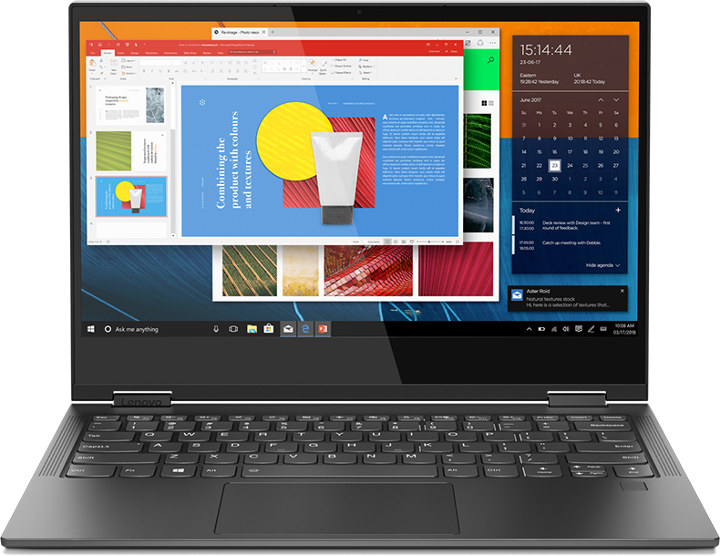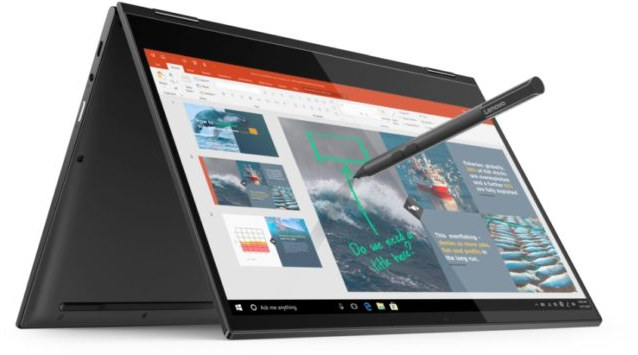The first Windows 10 based Arm laptops, also referred to as always-on always connected mobile PC’s, were launched last year with Qualcomm Snapdragon 835 processor, LTE connectivity and promises of 20+ hours of battery life.
The laptops did deliver on the last two features, but most reviewers found the devices – such as HP Envy X2 or ASUS Novago TP370 – to be pretty sluggish considering the price you’d paid for them. But Qualcomm did not stand still and announced Snapdragon 850 processor in June, with 30% better system performance, nearly three times faster AI performance, faster LTE connectivity, and a battery life of over 25 hours.
So we just had to wait for products announcements, and the first Snapdragon 850 laptop is Lenovo Yoga C630 WOS (Windows on Snapdragon) that comes with 4 or 8GB RAM, 128 or 256GB internal storage, and hopefully provides a smoother user experience, maybe something similar to Intel Core-m3 processors, but with a longer battery life, and always-on LTE connectivity.
 Lenovo Yoga C630 WOS preliminary specifications:
Lenovo Yoga C630 WOS preliminary specifications:
- SoC – Qualcomm Snapdragon 850 “Mobile Compute Platform” octa-core Kryo 385 processor clocked @ up to 2.96 GHz, Adreno 630 GPU with supporting for Open GL ES 3.2, Open CL 2.0, Vulkan, DirectX 12, Hexagon 685 DSP
- System Memory – 4GB or 8GB LPDDR4X
- Storage – 128GB or 256GB UFS 2.1 flash
- Display – 13.3″ IPS touchscreen display with 1920 x 1080 resolution
- Audio – Stereo speakers, audio jack
- Camera – Front webcam
- Connectivity
- Snapdragon X20 LTE modem (built-in SD850 SoC) with 1.2 Gbps download speed, 150 Mbps upload speed + SIM card card
- 802.11ad multi-gigabit WiFi & 802.11ac 2×2 MU-MIMO WiFi @ 2.4 GHz, 5 GHz, or 60 GHz (Tri-band WiFi) *
- Bluetooth 5 *
- USB – 2x USB type-C ports both with USB 3.0 data speed, power delivery, and one also supporting DisplayPort Alternative mode
- Sensors – Fingerprint reader
- Battery – 61 Whr battery good for 25+ hours of typical use
- Dimensions – 306.8 x 216.9 x 12.5mm
- Weight – 1.2 kg
* WiFi and Bluetooth are not mentioned in the laptop specifications at all, but considering the Snapdragon 850 processor comes with built-in support for both, it’s likely they are included.
An optional Lenovo active pen is also offered with the laptop.
 Qualcomm clearly stated the processor would only support Windows 10, and no Android, no Linux in the announcement last June, but apparently Snapdragon 850 is close enough to Snapdragon 845 SoC that work on Linux mainline has already started, and Fedora support – and likely other Linux distros – might eventually become reality.
Qualcomm clearly stated the processor would only support Windows 10, and no Android, no Linux in the announcement last June, but apparently Snapdragon 850 is close enough to Snapdragon 845 SoC that work on Linux mainline has already started, and Fedora support – and likely other Linux distros – might eventually become reality.
The laptop was announced at IFA 2018, and the company only provided the price for the EMEA market in the press release: €999 (VAT included) and up starting in November 2018. However, US websites report a price of $849.99, also in November, for the 4GB/128GB configuration.

Jean-Luc started CNX Software in 2010 as a part-time endeavor, before quitting his job as a software engineering manager, and starting to write daily news, and reviews full time later in 2011.
Support CNX Software! Donate via cryptocurrencies, become a Patron on Patreon, or purchase goods on Amazon or Aliexpress




